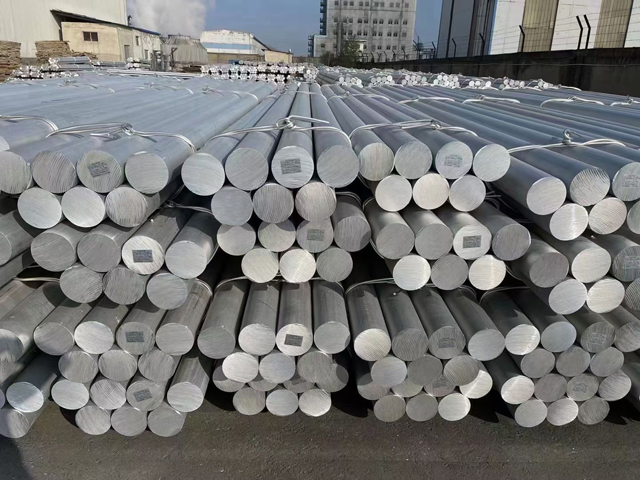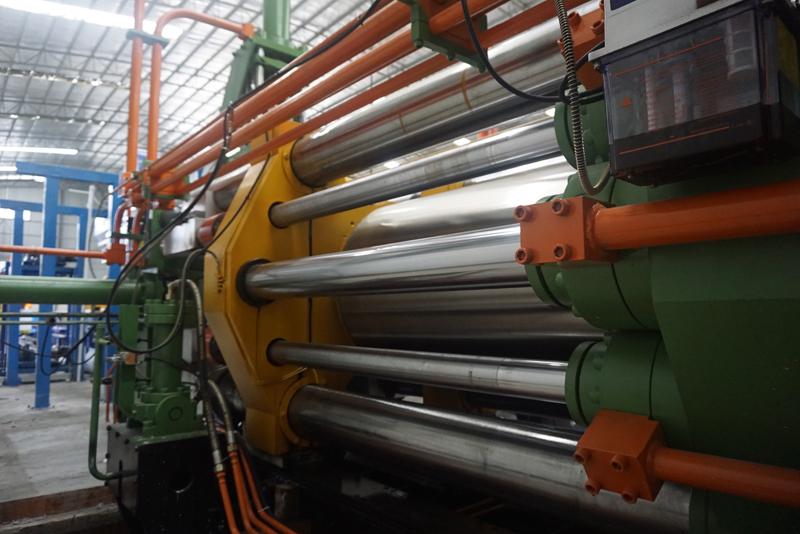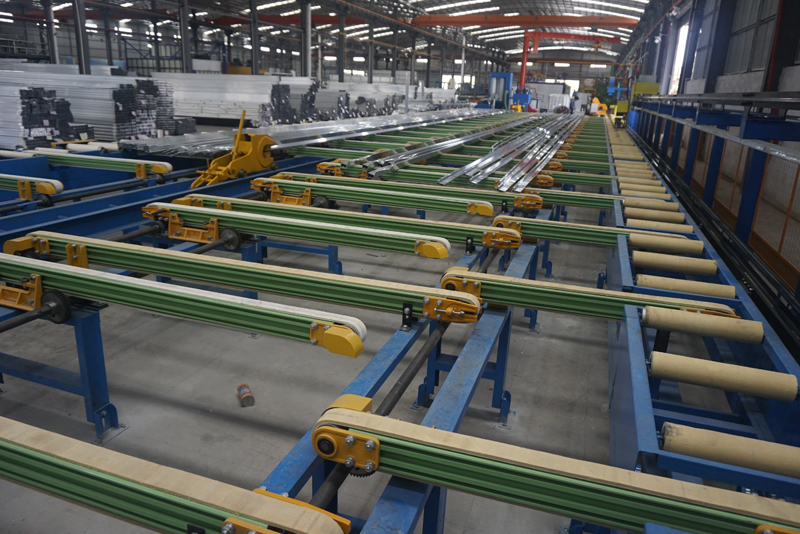How To Produce 6063 Aluminum Profile
Updated: 1 Apr 2024
Among all aluminum profile series, the 6063 series aluminum profiles are the most commonly used and have the broadest range of applications. Many people want to know how 6063 aluminum profiles are extruded and produced. Shenghai Aluminum takes everyone to understand the detailed process.
Selection of raw materials:
6063 aluminum profiles are obtained by heating aluminum rods and extruding them through molds. Aluminium rods are cast from aluminium ingots, called 6063 aluminium profile raw materials, and raw materials will directly affect the performance of aluminium profile products.
The production of aluminum rods requires high technical requirements and industry standards to ensure the product performance of industrial aluminum profiles.
Aluminum rod melting and casting production should pay attention to the following points:
Content of active impurities.
Alloy composition.
Melt superheat temperature.
Diversion method.
Movement of melt relative to the crystallographic plane.
Cooling rate.
Speed of casting 6063 aluminum rods.

Mold design:
The 6063 aluminum profile is the final product of an aluminum rod that is heated and extruded through a die. The die is a device with high-precision specifications designed according to requirements, which is used to extrude profile products with required specifications and cross-sections.
The following points should be paid attention to in the design and maintenance of molds:
1. Structure involved in the mold must first meet the production needs and comply with common sense of physics and mechanics to ensure that the products produced can achieve the performance used.
2. Material selection and hardness of the mold must be appropriate to avoid deformation, scratches and other defects during the extrusion process, which will affect the quality of the final product.
3. Mold must be cleaned and inspected frequently, and any problems must be repaired in time to avoid scratches, burrs and other complex injuries during the profile extrusion production process, which will seriously affect the quality of aluminum profile products.
Aluminum rod heating:
The heating treatment of aluminum rods must ensure temperature control. Suppose the temperature is too high or too low. In that case, it will directly affect the hardness of the final product, so the temperature must be strictly controlled during the heating and cooling processes.
Aluminum profile extrusion:
The current extrusion press standards for 6063-T5 aluminum profiles range from 800 to 1800 tons. The above standards can meet the average production of 6063-T5 series aluminum profiles.
Factors to note in the aluminum profile extrusion process:
1. Temperature control: Extrusion temperature is the most basic and critical process factor for extrusion production. Extrusion temperature greatly impacts product quality, production efficiency, mold life, energy consumption, etc.
2. Extrusion speed: The extrusion speed must be carefully controlled during the extrusion process. The extrusion speed has an important influence on the thermal effect of deformation, uniformity of deformation, recrystallization and solid solution processes, mechanical properties of products and surface quality.
3. On-machine quenching: 6063-T5 quenching is to retain the Mg2Si solidly dissolved in the base metal at high temperatures and rapidly cooled to room temperature after exiting the die-hole. The cooling rate is often proportional to the strengthening phase content. The minimum cooling rate of 6063 alloy can be strengthened is 38°C/min, which is suitable for air-cooling quenching. Changing the fan and fan rotation speed can change the cooling intensity so that the temperature of the product before tension straightening can be reduced to below 60°C.

Aluminum profile straightening correction:
There will be a specific deviation after the aluminum profile is extruded. After forming, a straightening machine must be used for straightening correction. The newly extruded aluminum profile must be calibrated to within the required tolerance range. Straightening correction must be done using a straightening machine. to complete to ensure its accuracy.
Artificial aging:
Aluminum profiles produced by extrusion have low hardness before aging and cannot be used as finished products. Therefore, generally speaking, they must be aged to increase their strength.
Production process control:
1. Ingot temperature control: The temperature of the ingot must be measured before extrusion on the machine. It can only be put on the machine for production when the process requirements are met.
2. Online quenching process: Solid solution quenching is the basic prerequisite for aging. Aging without solid solution quenching is meaningless. Therefore, at the outlet of the extruder, the online quenching process (air quenching, air-mist quenching, water quenching, etc.) must be selected based on the ingot grade, profile wall thickness, extrusion speed, and quenching equipment conditions to ensure the quenching cooling rate Meets alloy quenching sensitivity requirements.
3. Setting and control of aging furnace temperature: Usually, there is a specific error between the aging furnace temperature and the surface temperature of the aging furnace. When setting the surface temperature, it should be set according to the actual temperature of the furnace, and close attention should be paid to the ageing furnace temperature—fluctuation conditions.
4. Aging and insulation: Aging must be carried out strictly by process requirements, and the insulation time must be appropriate to prevent insufficient hardness due to under-aging or over-aging. Blank framing and furnace loading:
1. Extrusion framing must be manageable, and there must be a gap between materials, especially small and thick materials that are not ventilated. The gap between pipe materials and small materials and sheet materials must be larger. When assembling a frame, the pipe material is placed underneath, which benefits the aging circulation air supply.
2. Before loading, the 6063 special alloy and the ordinary 6063 alloy must be aged separately in the furnace. If they must be aged in the same furnace for production reasons, the special alloy process must be used for aging.
Sand blasting + anodizing process:
After the aluminum profile is extruded, there will be obvious stretch marks on the surface, and the surface micropores are large and relatively rough. It must be sandblasted. The impact of emery during the sandblasting process will cause the surface structure of the aluminum profile to The structural change, accompanied by the slip of the crystal during the plastic deformation process, leads to an increase in the dislocation density within the sub-grain and the profile surface becomes smoother.
The surface treatment of aluminum profiles goes through the following steps:
Surface sand blasting;
Surface pretreatment;
Aluminum profile degreasing process;
Aluminum profile acid etching process;
Aluminum profile alkali etching process;
Neutralization process;
Industrial aluminum profile oxidation process; Industrial aluminum profile sealing process; Currently, in order to reduce costs, many industrial aluminum profiles on the market have reduced the surface oxidation treatment process of industrial aluminum profiles and directly use silver white oxidation treatment. The surface is bright silver, and the coating is generally Between 5μ-6μ is far from the industry standard (industry standard coating 10μ-12μ).
Package:
Since the quality requirements for aluminum profile products are very high and the overall aesthetics of the appearance is very particular, the requirements for later packaging are very strict. The overall packaging process is divided into the following categories: film on the surface of the profile to avoid scratches; wrap with pearl cotton; outermost layer; Wrap it in a layer of kraft paper to avoid scratching it with hard objects.
The above is the whole process of aluminum alloy 6063 from extrusion to packaging. Of course, the application environment of some profiles is different, and the process will be different. If you want to get aluminum profile solutions, you can contact Shenghai Aluminium sales team at any time.
Selection of raw materials:
6063 aluminum profiles are obtained by heating aluminum rods and extruding them through molds. Aluminium rods are cast from aluminium ingots, called 6063 aluminium profile raw materials, and raw materials will directly affect the performance of aluminium profile products.
The production of aluminum rods requires high technical requirements and industry standards to ensure the product performance of industrial aluminum profiles.
Aluminum rod melting and casting production should pay attention to the following points:
Content of active impurities.
Alloy composition.
Melt superheat temperature.
Diversion method.
Movement of melt relative to the crystallographic plane.
Cooling rate.
Speed of casting 6063 aluminum rods.

Mold design:
The 6063 aluminum profile is the final product of an aluminum rod that is heated and extruded through a die. The die is a device with high-precision specifications designed according to requirements, which is used to extrude profile products with required specifications and cross-sections.
The following points should be paid attention to in the design and maintenance of molds:
1. Structure involved in the mold must first meet the production needs and comply with common sense of physics and mechanics to ensure that the products produced can achieve the performance used.
2. Material selection and hardness of the mold must be appropriate to avoid deformation, scratches and other defects during the extrusion process, which will affect the quality of the final product.
3. Mold must be cleaned and inspected frequently, and any problems must be repaired in time to avoid scratches, burrs and other complex injuries during the profile extrusion production process, which will seriously affect the quality of aluminum profile products.
Aluminum rod heating:
The heating treatment of aluminum rods must ensure temperature control. Suppose the temperature is too high or too low. In that case, it will directly affect the hardness of the final product, so the temperature must be strictly controlled during the heating and cooling processes.
Aluminum profile extrusion:
The current extrusion press standards for 6063-T5 aluminum profiles range from 800 to 1800 tons. The above standards can meet the average production of 6063-T5 series aluminum profiles.
Factors to note in the aluminum profile extrusion process:
1. Temperature control: Extrusion temperature is the most basic and critical process factor for extrusion production. Extrusion temperature greatly impacts product quality, production efficiency, mold life, energy consumption, etc.
2. Extrusion speed: The extrusion speed must be carefully controlled during the extrusion process. The extrusion speed has an important influence on the thermal effect of deformation, uniformity of deformation, recrystallization and solid solution processes, mechanical properties of products and surface quality.
3. On-machine quenching: 6063-T5 quenching is to retain the Mg2Si solidly dissolved in the base metal at high temperatures and rapidly cooled to room temperature after exiting the die-hole. The cooling rate is often proportional to the strengthening phase content. The minimum cooling rate of 6063 alloy can be strengthened is 38°C/min, which is suitable for air-cooling quenching. Changing the fan and fan rotation speed can change the cooling intensity so that the temperature of the product before tension straightening can be reduced to below 60°C.

Aluminum profile straightening correction:
There will be a specific deviation after the aluminum profile is extruded. After forming, a straightening machine must be used for straightening correction. The newly extruded aluminum profile must be calibrated to within the required tolerance range. Straightening correction must be done using a straightening machine. to complete to ensure its accuracy.
Artificial aging:
Aluminum profiles produced by extrusion have low hardness before aging and cannot be used as finished products. Therefore, generally speaking, they must be aged to increase their strength.
1. Ingot temperature control: The temperature of the ingot must be measured before extrusion on the machine. It can only be put on the machine for production when the process requirements are met.
2. Online quenching process: Solid solution quenching is the basic prerequisite for aging. Aging without solid solution quenching is meaningless. Therefore, at the outlet of the extruder, the online quenching process (air quenching, air-mist quenching, water quenching, etc.) must be selected based on the ingot grade, profile wall thickness, extrusion speed, and quenching equipment conditions to ensure the quenching cooling rate Meets alloy quenching sensitivity requirements.
3. Setting and control of aging furnace temperature: Usually, there is a specific error between the aging furnace temperature and the surface temperature of the aging furnace. When setting the surface temperature, it should be set according to the actual temperature of the furnace, and close attention should be paid to the ageing furnace temperature—fluctuation conditions.
4. Aging and insulation: Aging must be carried out strictly by process requirements, and the insulation time must be appropriate to prevent insufficient hardness due to under-aging or over-aging. Blank framing and furnace loading:
1. Extrusion framing must be manageable, and there must be a gap between materials, especially small and thick materials that are not ventilated. The gap between pipe materials and small materials and sheet materials must be larger. When assembling a frame, the pipe material is placed underneath, which benefits the aging circulation air supply.
2. Before loading, the 6063 special alloy and the ordinary 6063 alloy must be aged separately in the furnace. If they must be aged in the same furnace for production reasons, the special alloy process must be used for aging.
Sand blasting + anodizing process:
After the aluminum profile is extruded, there will be obvious stretch marks on the surface, and the surface micropores are large and relatively rough. It must be sandblasted. The impact of emery during the sandblasting process will cause the surface structure of the aluminum profile to The structural change, accompanied by the slip of the crystal during the plastic deformation process, leads to an increase in the dislocation density within the sub-grain and the profile surface becomes smoother.
The surface treatment of aluminum profiles goes through the following steps:
Surface sand blasting;
Surface pretreatment;
Aluminum profile degreasing process;
Aluminum profile acid etching process;
Aluminum profile alkali etching process;
Neutralization process;
Industrial aluminum profile oxidation process; Industrial aluminum profile sealing process; Currently, in order to reduce costs, many industrial aluminum profiles on the market have reduced the surface oxidation treatment process of industrial aluminum profiles and directly use silver white oxidation treatment. The surface is bright silver, and the coating is generally Between 5μ-6μ is far from the industry standard (industry standard coating 10μ-12μ).
Package:
Since the quality requirements for aluminum profile products are very high and the overall aesthetics of the appearance is very particular, the requirements for later packaging are very strict. The overall packaging process is divided into the following categories: film on the surface of the profile to avoid scratches; wrap with pearl cotton; outermost layer; Wrap it in a layer of kraft paper to avoid scratching it with hard objects.
The above is the whole process of aluminum alloy 6063 from extrusion to packaging. Of course, the application environment of some profiles is different, and the process will be different. If you want to get aluminum profile solutions, you can contact Shenghai Aluminium sales team at any time.

